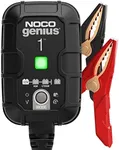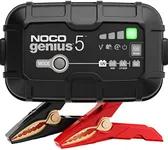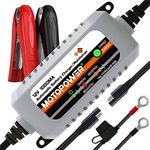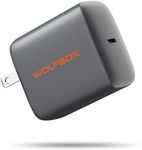Buying Guide for the Best Lithium Battery Chargers
Choosing the right lithium battery charger is important for both the safety and longevity of your batteries. A good charger ensures your batteries are charged efficiently, safely, and in a way that maximizes their lifespan. When shopping for a lithium battery charger, you should consider how you plan to use it, the type of batteries you have, and any special features you might need. Understanding the key specifications will help you make a choice that fits your needs and keeps your batteries in top condition.Battery CompatibilityBattery compatibility refers to the types and sizes of lithium batteries the charger can handle. This is important because not all chargers work with every lithium battery type, such as Li-ion, LiFePO4, or LiPo. Chargers are often designed for specific voltages and chemistries, so using the wrong charger can damage your battery or be unsafe. To navigate this, check the battery type and voltage your devices use, and make sure the charger specifically lists support for those. If you use multiple battery types, look for a charger with broad compatibility. Always match the charger's output to your battery's requirements for safe and effective charging.
Charging Current (Amperage)Charging current, measured in amps (A), determines how quickly your battery will charge. Higher current means faster charging, but not all batteries can safely handle high currents. Chargers often offer different current settings, such as 0.5A, 1A, 2A, or more. For small batteries, lower currents are safer and help extend battery life, while larger batteries can handle higher currents for faster charging. To pick the right current, check your battery's recommended charging rate (often listed as a 'C-rate' or in the manual) and choose a charger that matches or allows you to adjust the current to suit your battery size and needs.
Number of Charging BaysThe number of charging bays tells you how many batteries you can charge at once. This is important if you regularly use multiple batteries and want to charge them together. Chargers can have a single bay or multiple bays (like 2, 4, or more). If you only use one battery at a time, a single-bay charger is enough. If you have several batteries, a multi-bay charger saves time and is more convenient. Think about how many batteries you typically use and pick a charger that can handle your usual load.
Safety FeaturesSafety features in a charger protect both you and your batteries from problems like overcharging, overheating, or short circuits. Common safety features include automatic shut-off, temperature monitoring, reverse polarity protection, and overcurrent protection. These features are important because lithium batteries can be sensitive to improper charging and may become dangerous if mishandled. When choosing a charger, look for models that clearly list these protections. If you plan to leave batteries charging unattended or want extra peace of mind, prioritize chargers with comprehensive safety features.
Display and IndicatorsDisplays and indicators help you monitor the charging process. Some chargers have simple LED lights to show charging status, while others have digital screens that display voltage, current, and charge progress. This is important for knowing when your batteries are fully charged or if there’s a problem. If you like to keep things simple, a basic indicator may be enough. If you want more information and control, look for a charger with a detailed display. Your preference for monitoring and information will guide your choice here.
Portability and Power SourcePortability and power source refer to how easy it is to carry the charger and what kind of power it needs. Some chargers are compact and lightweight, making them easy to take on the go, while others are larger and meant for home use. Chargers may plug into a wall outlet, USB port, or even a car adapter. If you need to charge batteries while traveling or outdoors, look for a portable charger with flexible power options. If you mostly charge at home, a larger, plug-in charger may be more suitable. Consider where and how you’ll use the charger most often to decide what’s best for you.



















